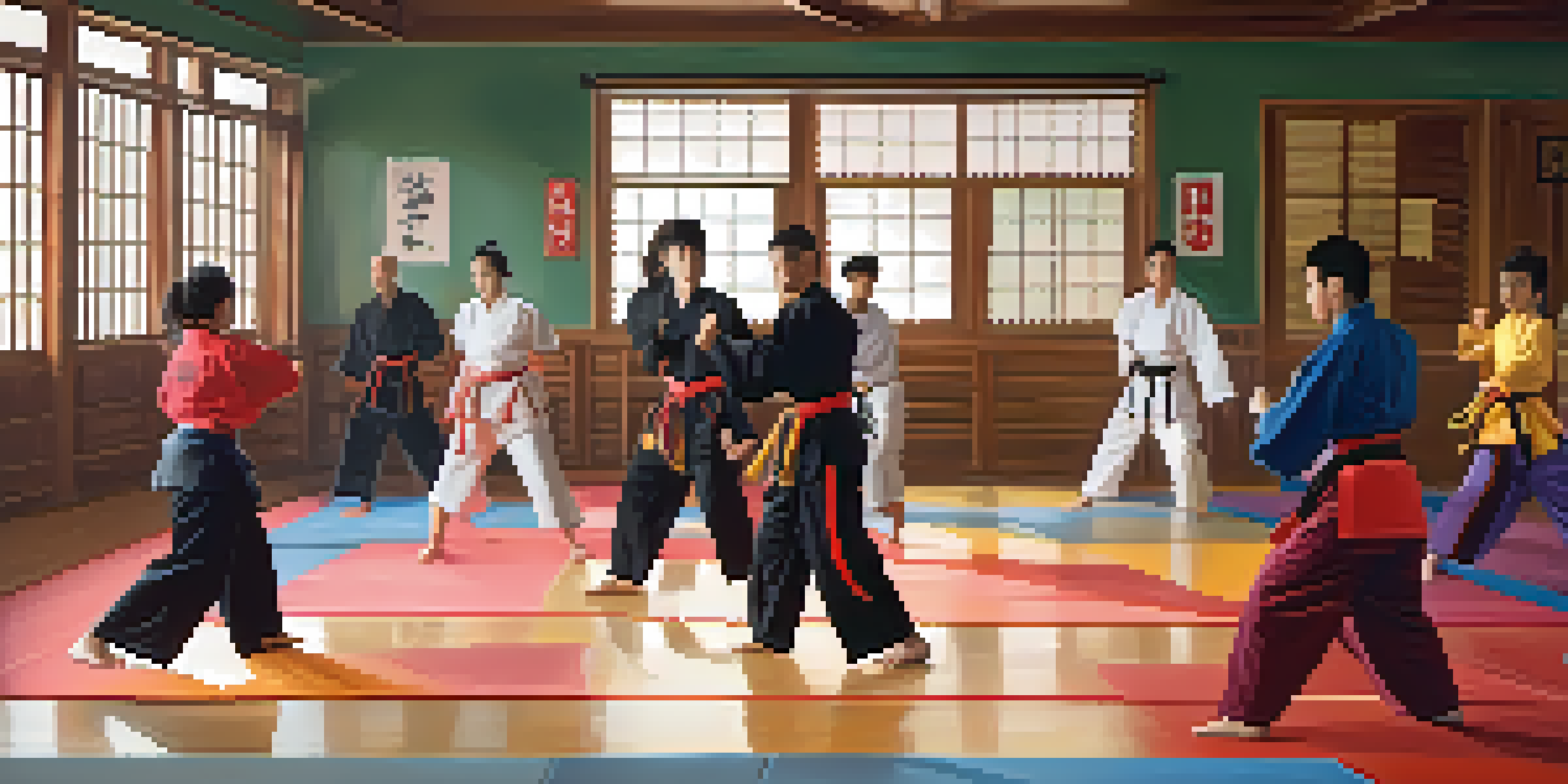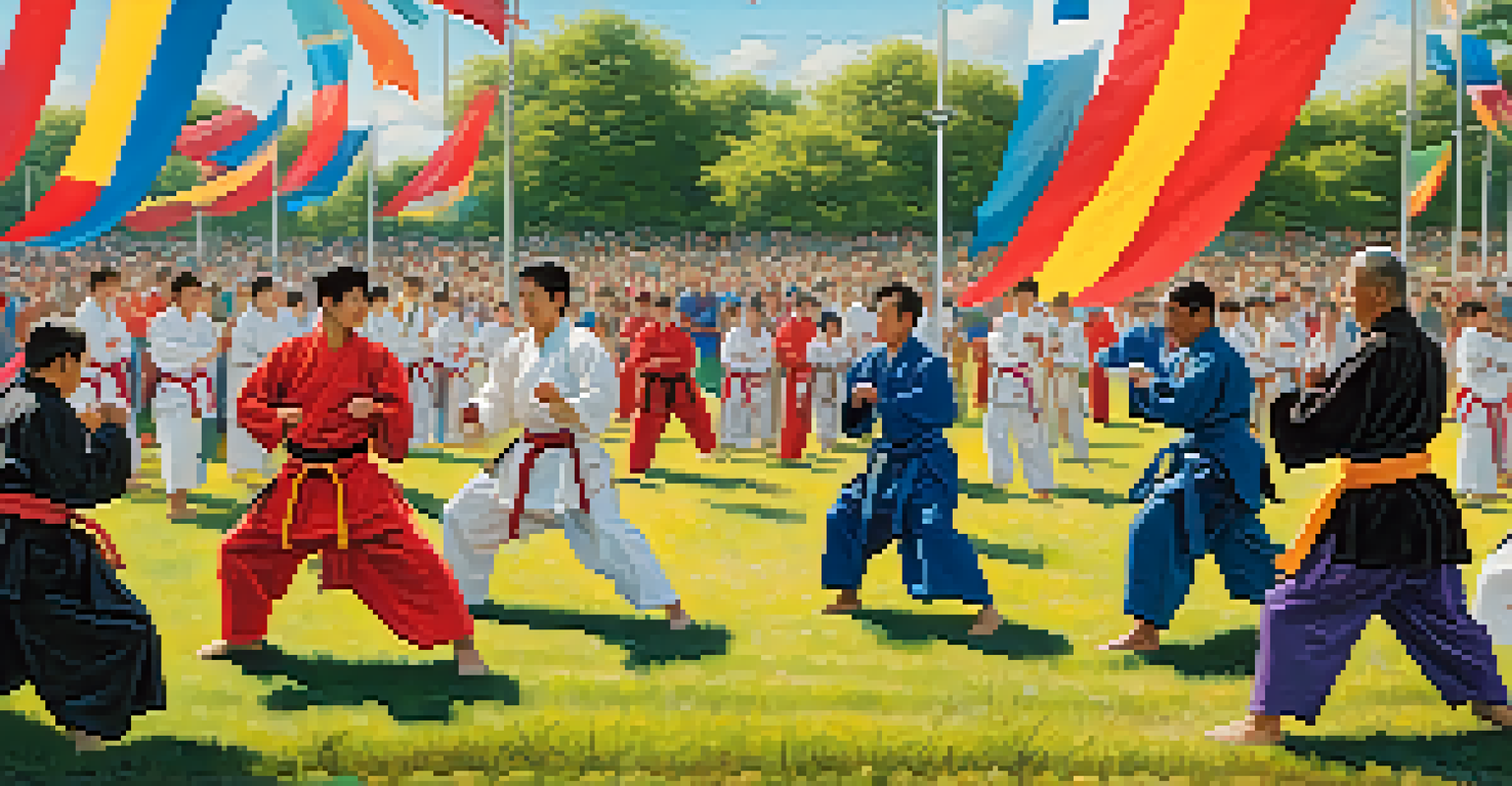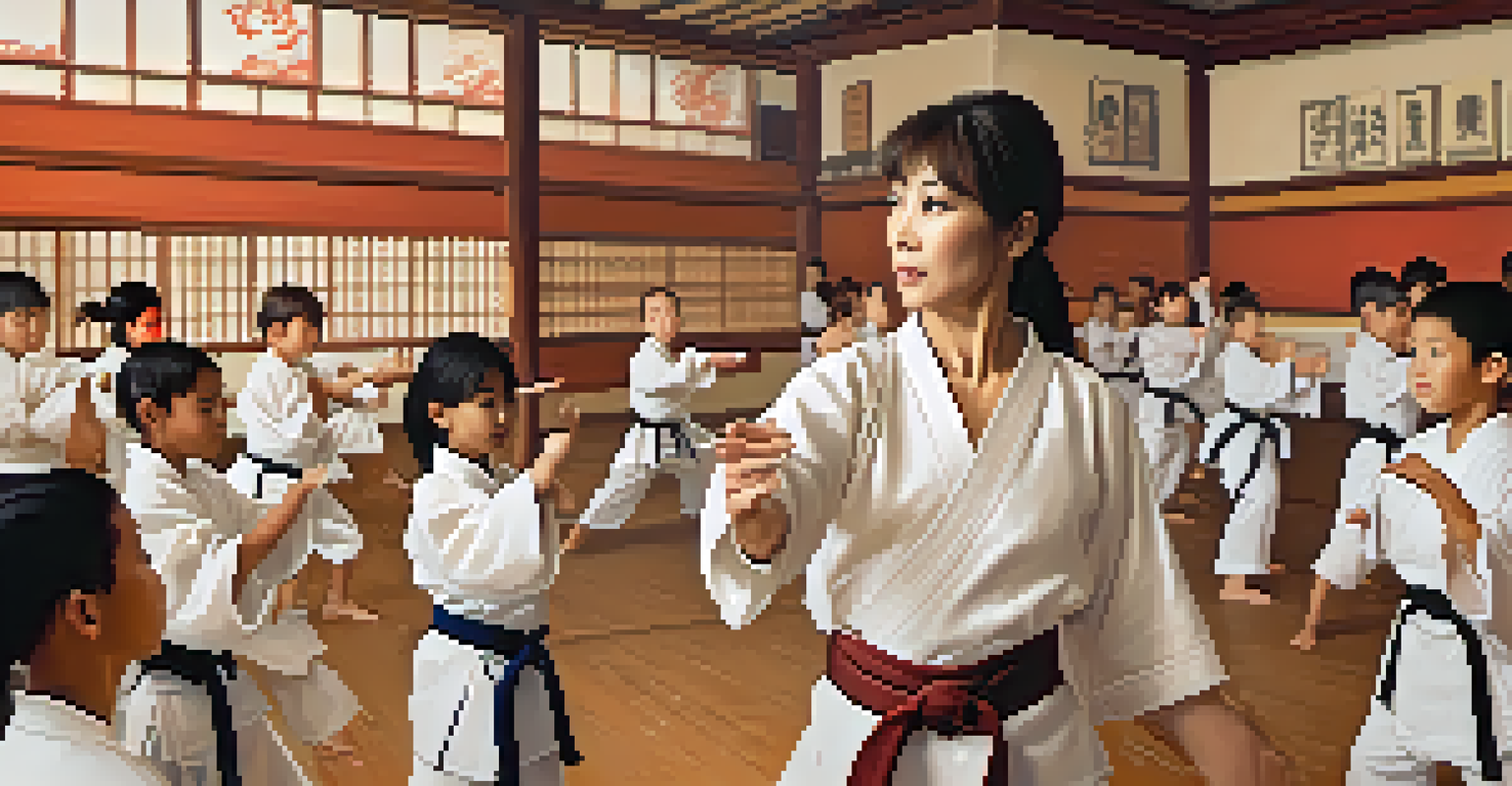Diversity in Martial Arts: Creating Welcoming Dojo Environments

Understanding Diversity in Martial Arts
Diversity in martial arts encompasses various demographics, including race, gender, age, and ability. This rich tapestry not only reflects the world we live in but also enriches the training experience for everyone involved. Just as different martial arts styles offer unique techniques, embracing diversity allows dojos to benefit from varied perspectives and experiences.
Diversity is the one true thing we all have in common. Celebrate it every day.
For instance, a dojo with practitioners from diverse backgrounds can introduce students to different cultural philosophies, enhancing their understanding of martial arts as a global discipline. This cross-pollination of ideas can lead to innovative training methods and foster a deeper appreciation for the art itself. Ultimately, inclusivity in martial arts cultivates an environment where everyone feels valued and empowered to learn.
By prioritizing diversity, dojos not only attract a broader range of students but also promote a sense of belonging. This welcoming atmosphere encourages individuals from all walks of life to explore martial arts, breaking down barriers and stereotypes in the process.
The Importance of Welcoming Dojo Environments
Creating a welcoming dojo environment is crucial for fostering student engagement and retention. When students feel safe and accepted, they are more likely to participate actively and progress in their training. A supportive atmosphere can be achieved through simple actions, like greeting new members warmly and encouraging camaraderie among students.

Moreover, a welcoming environment extends beyond physical space; it involves creating a culture of respect and understanding. This can be cultivated through open communication, where students are encouraged to express their concerns and suggestions. When everyone’s voice is heard, it strengthens the dojo community and promotes a positive training experience.
Embrace Diversity for Enrichment
Diversity in martial arts enhances the training experience by introducing varied perspectives and cultural philosophies.
Additionally, promoting events and workshops that celebrate diversity can enhance the dojo's sense of community. These initiatives not only educate members about different cultures but also build stronger bonds among students, making the dojo a second home for many.
Training Staff to Embrace Diversity
In order to create a truly inclusive dojo, it’s essential that instructors and staff are trained to embrace diversity. This involves understanding the needs and backgrounds of their students, which can be achieved through workshops or seminars focused on cultural competency. Educating staff about the significance of diversity ensures that they model inclusive behaviors and attitudes.
In diversity, there is beauty and there is strength.
Furthermore, instructors should be encouraged to adapt their teaching styles to accommodate different learning preferences. Some students may grasp techniques quicker through visual demonstrations, while others may benefit from verbal explanations. By recognizing these differences, instructors can create a more effective and engaging training environment.
Importantly, training should also cover how to handle conflicts or misunderstandings that may arise due to cultural differences. By equipping staff with the tools to navigate these situations, dojos can maintain a respectful and harmonious atmosphere for all practitioners.
Engaging the Community Beyond the Dojo
A dojo should not only serve its members but also engage with the broader community. By hosting open events, such as free classes or demonstrations, dojos can invite people from all backgrounds to experience martial arts firsthand. This outreach can help dispel myths and encourage more individuals to consider joining.
Collaborating with local organizations that support diversity can also enhance community ties. For example, partnering with schools or community centers to offer martial arts programs can introduce a wider audience to the benefits of training. These partnerships create opportunities for shared learning and promote inclusivity beyond the dojo walls.
Create Welcoming Dojo Environments
A supportive and inclusive dojo atmosphere encourages student engagement and retention, fostering a stronger community.
Ultimately, community engagement fosters a sense of belonging and demonstrates the dojo's commitment to diversity. When the local community sees a dojo as an inclusive space, it strengthens the dojo’s reputation and encourages a diverse range of individuals to participate.
Celebrating Diversity Through Events and Competitions
Organizing events and competitions that highlight diversity can be a powerful way to create a sense of unity within the dojo. These events can showcase different martial arts styles, encouraging students to learn from one another and appreciate various techniques. For example, a multicultural martial arts festival can feature demonstrations from different styles, fostering an atmosphere of respect and admiration.
Additionally, competitions designed to celebrate diversity can help break down barriers among practitioners. When students from different backgrounds compete together, it promotes camaraderie and the understanding that martial arts transcends individual differences. Such experiences can be transformative, allowing students to form friendships and learn from one another.
Moreover, recognizing and celebrating the achievements of diverse practitioners can inspire others to pursue their martial arts journeys. By highlighting role models from various backgrounds, dojos can motivate students to overcome challenges and embrace their unique identities.
The Role of Communication in Building Inclusivity
Effective communication plays a vital role in creating an inclusive dojo environment. Encouraging open dialogues among students and staff fosters trust and understanding. For instance, regular check-ins can help identify any issues within the dojo, allowing for timely resolutions and a more harmonious training atmosphere.
Moreover, incorporating feedback mechanisms can empower students to share their experiences and suggestions. This not only makes them feel valued but also provides valuable insights into how the dojo can improve its inclusivity efforts. By actively listening to all voices, dojos can adapt their practices and ensure everyone feels welcomed.
Community Engagement is Key
Engaging with the broader community through outreach and partnerships promotes inclusivity and strengthens the dojo's reputation.
Additionally, utilizing diverse communication methods can also enhance inclusivity. Some students may prefer written updates, while others might find verbal announcements more effective. By catering to these preferences, dojos can ensure that critical information is accessible to everyone.
The Future of Diversity in Martial Arts
As the martial arts community continues to evolve, the importance of diversity and inclusion will only grow. Dojos that prioritize creating welcoming environments will not only thrive but also contribute to a more equitable society. By embracing diversity, martial arts can become a platform for positive change, empowering individuals from all backgrounds.
Looking ahead, it’s essential for dojos to remain proactive in their diversity initiatives. This includes regularly assessing their practices and seeking feedback from students to identify areas for growth. By staying committed to inclusivity, dojos can adapt to the changing needs of their communities and ensure everyone feels represented.

Ultimately, a diverse and inclusive martial arts community enriches the training experience for all. As we move forward, let’s celebrate our differences and recognize that diversity is not just a goal—it's a strength that can elevate martial arts to new heights.